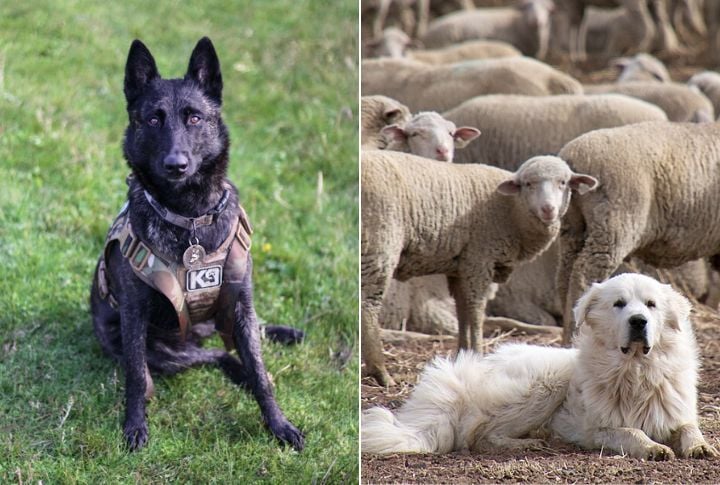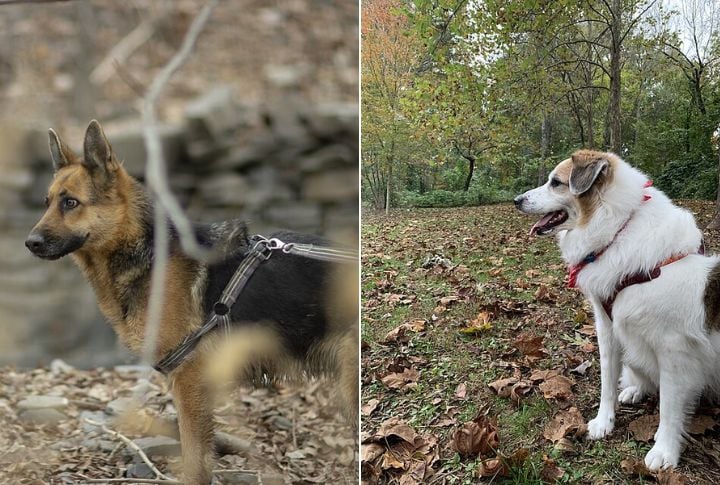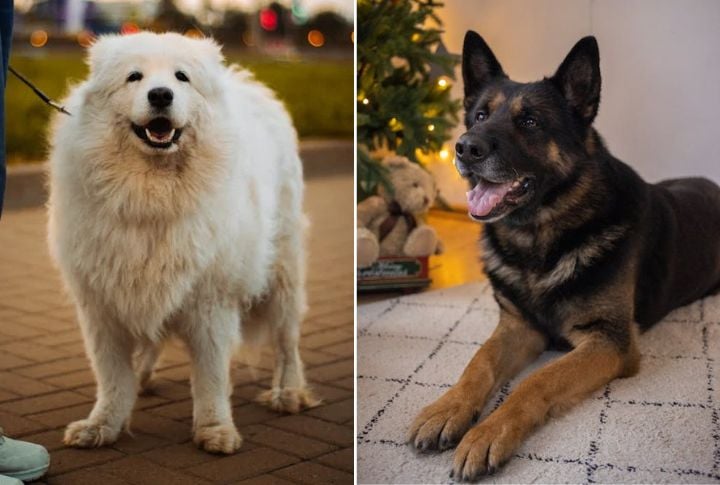What Sets The Great Pyrenees And German Shepherds Apart

Choosing the right dog starts with knowing what makes each breed unique. German Shepherds and Great Pyrenees may both be large and loyal, but they differ in personality, instincts, and lifestyle needs. Understanding these differences helps match the right dog to your home and routine. Let’s take a look.
Jobs They Were Bred For

Each breed was born to work but in very different ways. German Shepherds excel in agility and service tasks. Meanwhile, the Great Pyrenees were made to watch over flocks independently in harsh and rugged terrains.
Size Differences

With their towering frames, Great Pyrenees often outweigh German Shepherds by 20–30 pounds. Their bulk and bone structure are built for stillness and strength, unlike the Shepherd’s leaner and more athletic physique designed for speed and stamina.
Coat Characteristics

The German Shepherd’s double coat lies flatter and is shorter than the Great Pyrenees’ long, dense fur. While both offer protection, the Pyrenees’ coat is especially adapted for cold mountain climates and repels moisture and dirt naturally.
Adaptability To Living Conditions

German Shepherds thrive in various environments, from urban to rural, as long as they get enough stimulation. Great Pyrenees are better suited for larger properties or rural areas, where they can roam and guard. They may not do well in apartments.
Their Way With People

Temperament shapes how dogs interact with people. German Shepherds are loyal and driven by direction. The Great Pyrenees are affectionate but lean toward independence and reserve. Their approach to humans reflects centuries of differing work and companionship roles.
Training Differences

According to most trainers, the German Shepherd is a star pupil. Their eagerness to learn contrasts with the Great Pyrenees’ more stubborn and self-reliant nature. Teaching a Shepherd is dialoguing, whereas, with the Pyrenees, it’s a negotiation.
Life Expectancy

German Shepherds typically live between 9 to 13 years, benefiting from their active lifestyle and strong health. On the other hand, Great Pyrenees have a slightly shorter life expectancy, generally around 10 to 12 years, often due to their large size and health predispositions.
Guarding Styles

Don’t mistake silence for inaction. German Shepherds often take an assertive and direct approach to threats. The Great Pyrenees, on the other hand, uses presence and volume, coupled with barking and looming, to deter intruders from afar.
Smarts In Action

Both breeds are intelligent but in unique ways. German Shepherds excel at following commands and problem-solving under instruction. Great Pyrenees demonstrate situational awareness and decision-making skills best when left to act autonomously.
Social Preferences

Social dynamics vary between the two breeds. German Shepherds crave connection and thrive on human attention. However, the Great Pyrenees may enjoy family time but often keep a calm distance. They’re affectionate on their terms, not typically needy or overly expressive.
Climate Adaptability

Climate tolerance favors the Pyrenees in cold and snowy regions. Their thick coat and slow metabolism help them thrive in wintery conditions. Conversely, German Shepherds handle a range of temperatures but may struggle in extreme cold without protection.
Drool Levels

Drool isn’t everyone’s favorite trait. Great Pyrenees, due to their loose jowls and size, are more prone to slobber. In contrast, German Shepherds are tidier in this department. This is often a deciding factor for first-time dog owners.
Shedding Traits

Both breeds shed hair, but how they shed differs. The Pyrenees’ long coat releases clumps seasonally and demands frequent brushing. German Shepherds shed year-round, especially their undercoat, which requires consistent maintenance to avoid a carpet of fur indoors.
Breed-Specific Health Concerns

German Shepherds commonly face hip dysplasia, digestive issues, and degenerative diseases. On the other hand, Great Pyrenees are vulnerable to bloating and orthopedic conditions due to their size. Knowing breed-specific risks helps owners stay proactive with veterinary care.
Daily Exercise Demands

Physical stimulation is a must for German Shepherds, who become restless or anxious when they don’t get sufficient exercise. Great Pyrenees enjoy casual strolls but aren’t as driven to engage in play or structured fitness routines.






